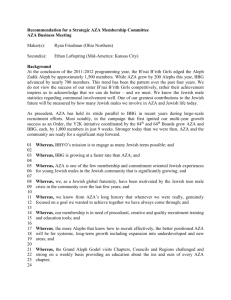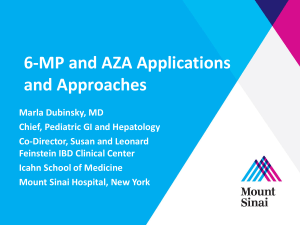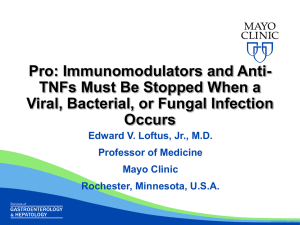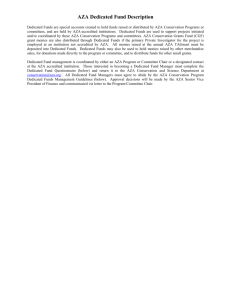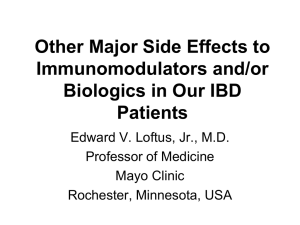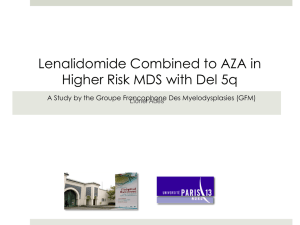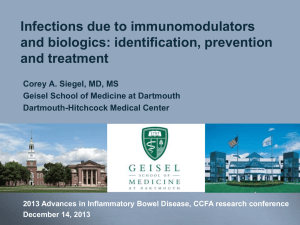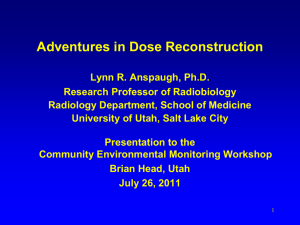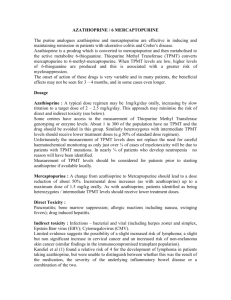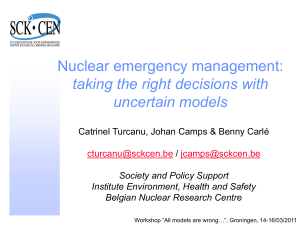Autoimmune diseases
advertisement
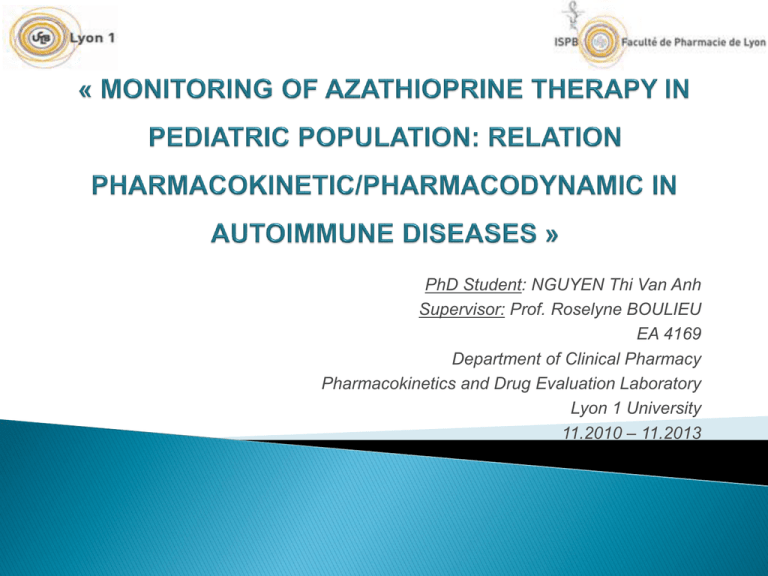
PhD Student: NGUYEN Thi Van Anh Supervisor: Prof. Roselyne BOULIEU EA 4169 Department of Clinical Pharmacy Pharmacokinetics and Drug Evaluation Laboratory Lyon 1 University 11.2010 – 11.2013 INTRODUCTION - OBJECTIVES Autoimmune diseases: arise from an overactive immune response of the body against its cell. Inflammatory bowel disease (IBD): a group of disorders in which the intestines become inflamed Autoimmune hepatitis (AIH): the immune systems attacks liver cells Dermatology diseases: Skin diseases Azathioprine (AZA): - an immunosuppressive drug, complex metabolism 6-TGN: an active metabolite, 250-450 pmol/8.108 RBCs: therapeutic range Limited data: on AZA dose for children OBJECTIVES Suggest AZA dose for children Evaluate efficacy, toxicity in function of AZA dose and 6TGN level AZA METABOLISM AZA 6MP 6-MeMP Inactive metabolite, TOXICITY 6-TGMP Mono P 6-TGDP 6-TGN Active metabolite 6-TUA Di P 6-TGTP Tri P Most active 1st year AZA DOSE FOR IBD CHILDREN Objective: - Suggest AZA dose for pediatric IBD patients - Investigate efficacy, toxicity in function of AZA dose and 6-TGN level Method: 64 patients less than 19 years received AZA mono-therapy for at least 3 months - 3 dose groups: below 2, 2-2.5 (standard dose), greater than 2.5 mg/kg/d - Remission: PCDAI <10 - Toxicity: Leukopenia; Lymphopenia; Hepatotoxicity, Pancreatotoxicity - Metabolite assay (6-TGN, Me6-MPN): HPLC RESULTS -AZA dose below 2 mg/kg/d appears effective in pediatric patients (94%) - Children may achieve remission when 6-TGN level below 250 nmol/h/mL RBCs (85%) - Therapeutic range 250-450 pmol/8.108 RBCs seems not appropriate Further Studies Now INFLUENCE OF AGE ON UTILITY OF AZA DOSE IN IBD CHILDREN Our 1st study: suggest dose for IBD children less than 19 years AZA dose less than 2 mg/kg/d is effective 1 published study: suggest dose greater than 3 mg/kg/d for children 6 years old or younger Investigate influence of age on AZA efficacy and toxicity in function of AZA dose and 6-TGN level Method: -Divide studied population into 2 age groups: the adolescent ( more than 11 years), the young children (11 years and younger) - Data of each groups is subdivided into groups of AZA dose: Below 2 mg/kg/d, 2-2.5 mg/kg/d, more than 2.5 mg/kg/d Next years STUDY ON AZA THERAPY IN CHILDREN WITH SOME OTHER AUTOIMMUNE DISEASES Autoimmune Hepatitis (AIH) and Dermatology diseases Collect pediatric patients treated with AZA Evaluate efficacy, toxicity - Investigate therapeutic range of 6-TGN level - Optimize AZA dose for children with these diseases 6TGN: - correspond to the mono, di, tri-phosphate forms of 6-Thioguanosine (Tri phosphate form was considered to be the major active compound) Previous studies determined total 6-TGN levels Contradictory data on relation between 6-TGN level and efficacy - Develop a method to determine levels of these 6-TGN forms in children - Investigate the relation between each form of 6-TGN and efficacy in children
